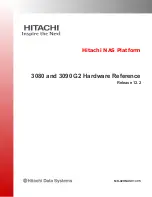
20
© Sealevel Systems, Inc.
4021 Manual | SL9154 11/2021
Appendix C
–
Electrical Interface
RS-232
Quite possibly the most widely used communication standard is RS-232. This implementation has been
defined and revised several times and is often referred to as RS-232 or EIA/TIA-232. It is defined by the EIA
as the
Interface between Data Terminal Equipment and Data Circuit- Terminating Equipment Employing Serial
Binary Data Interchange
. The mechanical implementation of RS-232 is on a 25 pin D sub connector. The
IBM PC computer defined the RS-232 port on a 9 pin D sub connector and subsequently the EIA/TIA
approved this implementation as the EIA/TIA-574 standard. This standard is defined as the
9-Position Non-
Synchronous Interface between Data Terminal Equipment and Data Circuit-Terminating Equipment
Employing Serial Binary Data Interchange
. Both implementations are in widespread use and will be referred
to as RS-232 in this document. RS-232 is capable of operating at data rates up to 20 Kbps at distances less
than 50 ft. The absolute maximum data rate may vary due to line conditions and cable lengths. RS-232
often operates at 38.4 Kbps over very short distances. The voltage levels defined by RS-232 range from -
12 to +12 volts. RS-232 is a single ended or unbalanced interface, meaning that a single electrical signal is
compared to a common signal (ground) to determine binary logic states. A voltage of +12 volts (u3
to +10 volts) represents a binary 0 (space) and -12 volts (-3 to -10 volts) denotes a binary 1 (mark). The RS-
232 and the EIA/TIA-574 specification defines two type of interface circuits, Data Terminal Equipment (DTE)
and Data Circuit-Terminating Equipment (DCE). The Sealevel Systems adapter is a DTE interface.
V.35
V.35 is a standard defined by ITU (formerly CCITT) that specifies an electrical, mechanical, and physical
interface that is used extensively by high-speed digital carriers such as AT&T Dataphone Digital Service
(DDS). ITU V.35 is an international standard that is often referred to as
Data Transmission at 48 Kbps Using
60 - 108 KHz Group-Band Circuits.
ITU V.35 electrical characteristics are a combination of unbalanced
voltage and balanced current mode signals. Data and clock signals are balanced current mode circuits.
These circuits typically have voltage levels from 0.5 Volts to -0.5 Volts (1 Volt differential). The modem
control signals are unbalanced signals and are compatible with RS-232. The physical connector is a 34 pin
connector that supports 24 data, clock, and control signals. The physical connector is defined in the ISO-
2593 standard. ITU V.35 specification defines two type of interface circuits, Data Terminal Equipment (DTE)
and Data Circuit-Terminating Equipment (DCE). The Sealevel Systems adapter is a DTE interface.








































